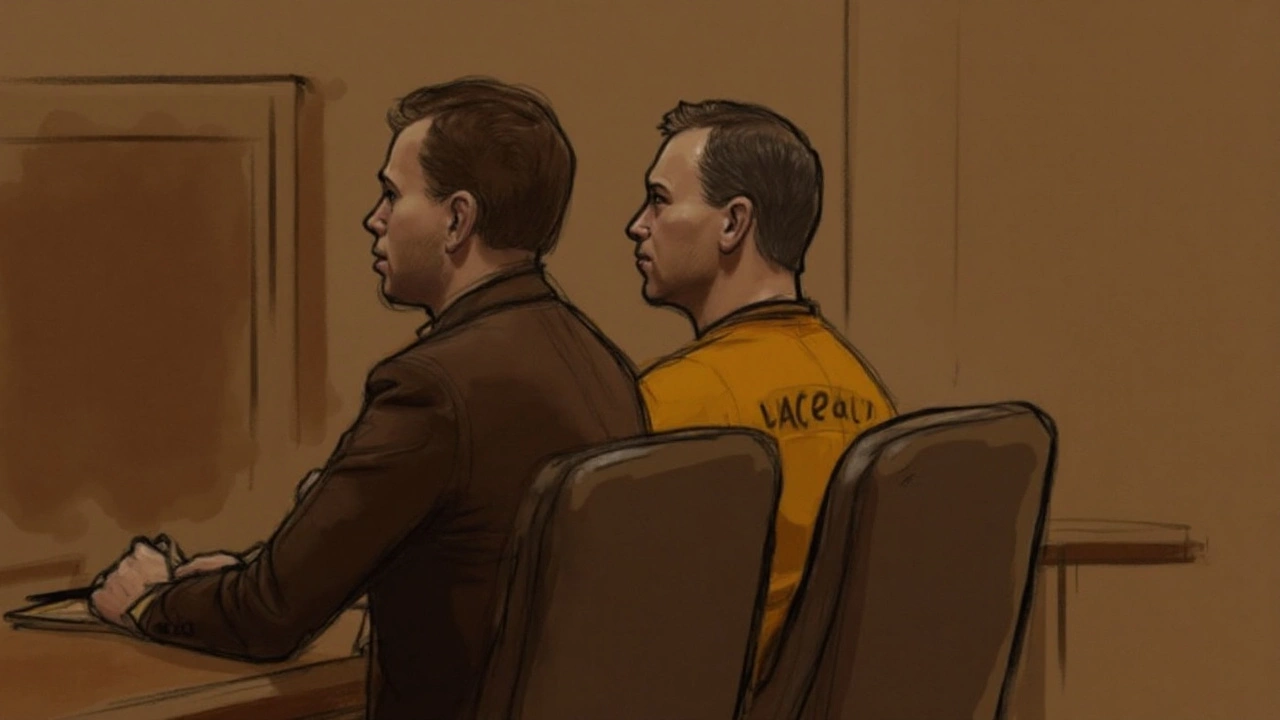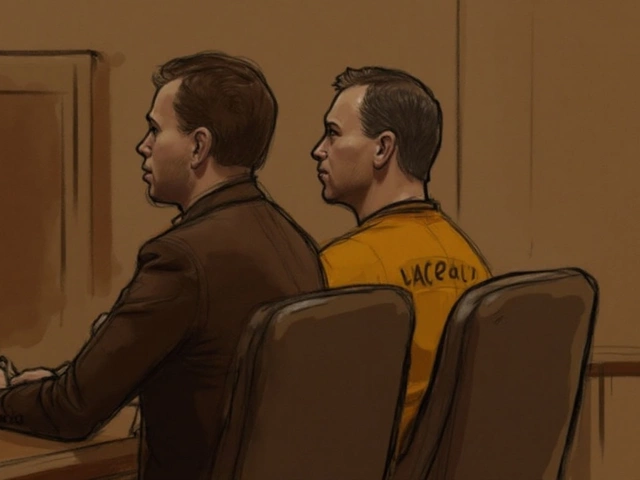Hennepin County grand jury indicts Vance Boelter in Minnesota political assassination case

Grand jury moves forward in Minnesota political assassination case
Hennepin County Attorney Mary Moriarty announced a grand jury indictment against Vance Boelter on eight state charges in connection with the June 14, 2025 attack that killed Minnesota House Speaker Melissa Hortman and her husband, Mark. The announcement came at the Hennepin County Government Center in Minneapolis, where Moriarty called the probe “one of the most complex investigations in the history of this state.”
Prosecutors say the killings were targeted and planned. The indictment adds two counts of first-degree premeditated murder, four counts of attempted first-degree murder, and two additional felonies tied to alleged conduct before and during the attacks. A grand jury finding does not decide guilt; it means jurors concluded there is probable cause to move the case forward.
Authorities say the violence spanned multiple locations and involved multiple intended victims. Senator John Hoffman and his wife, Yvette, were wounded in the attack. Prosecutors also accuse the suspect of attempting to kill Hoffman’s daughter, Hope, as well as Representative Christian Boehner. Federal officials previously said the suspect went to Boehner’s home earlier that morning, rang the doorbell, and claimed to be police. She was not home.
The indictment lists the following state charges:
- Two counts of first-degree premeditated murder (for the deaths of Speaker Hortman and Mark Hortman)
- Four counts of attempted first-degree murder (allegedly targeting Senator John Hoffman, Yvette Hoffman, Hope Hoffman, and Representative Christian Boehner)
- One count of felony animal cruelty
- One count of impersonating a police officer
Prosecutors have not publicly laid out every piece of evidence, but the premeditation allegation signals they believe the acts were planned in advance. If convicted of first-degree premeditated murder in Minnesota, a defendant faces life in prison. Minnesota does not have the death penalty.
According to officials, the sequence began hours before the shootings with the visit to Representative Boehner’s residence. Investigators say that impersonating an officer was part of an effort to approach targeted individuals. The case quickly became a multi-agency effort, drawing in federal agents alongside local police as the number of victims and scenes grew.
The deaths of Speaker Hortman and her husband stunned Minnesota’s political community. Targeted killings of elected officials are rare in the state, and security protocols around public servants are already under fresh scrutiny. The injuries to Senator Hoffman and his wife, as described by prosecutors, widened the shock and the investigative scope.
Earlier this month, the defendant pleaded not guilty to federal charges at an arraignment. He remains in federal custody. The Hennepin County Attorney’s Office said the state case will proceed after the federal prosecution runs its course. That sequencing is common in cases with overlapping federal and state interests. Under the “dual sovereignty” doctrine, federal and state authorities can both bring charges arising from the same events, each under its own laws.
Why use a grand jury here? In high-stakes violent felony cases, especially those touching public safety and government institutions, prosecutors often present evidence to a panel of citizens to test probable cause. Grand juries meet in secret, which protects witnesses and preserves the integrity of the investigation while prosecutors line up witnesses, documents, and forensic work. The result is an indictment—a formal charge that allows the state case to move toward arraignment and trial.
Moriarty’s office framed the investigation as sweeping, with multiple scenes, a wide timeline, and a mix of digital, physical, and testimonial evidence. When cases involve several intended victims, prosecutors must build separate counts that track each alleged act. That takes time and coordination, especially when federal agents are also gathering intelligence and security footage from different jurisdictions.
The impersonation of a police officer charge hints at the methods investigators believe were used to make contact with targets. In Minnesota, that offense typically involves presenting oneself as law enforcement to gain compliance, access, or trust. When paired with attempted murder counts, it suggests prosecutors see it as part of a broader plan, not a standalone act.
Felony animal cruelty rarely shows up alongside homicide counts, but it can appear when pets are harmed or used to intimidate or control people in a violent episode. Prosecutors did not detail the alleged cruelty in Thursday’s announcement. That count will likely be explained in future filings or at a hearing when the state lays out more of the record.
The next steps are procedural but important. The defense will get discovery, including police reports, forensic analyses, and grand jury materials that the law allows to be disclosed. Expect motions to suppress, venue discussions, and arguments over what evidence a jury can hear. With a federal case active, scheduling will be a juggling act. The state judge will likely set status conferences to track progress while the federal case advances.
If the case reaches a state trial, jurors will be asked to weigh premeditation, motive, and the credibility of witness accounts. Prosecutors often rely on a timeline built from phone records, vehicle data, surveillance videos, and eyewitness statements. The defense could challenge identification, intent, or the reliability of forensic conclusions. In a case this charged—politically and emotionally—judges typically take extra steps to avoid prejudicing the pool of potential jurors.
Security around public officials is already under the microscope. Law enforcement agencies routinely review protective protocols after high-profile attacks, from event screening to travel routines and home security. Legislators and staff may get briefings on situational awareness and threat reporting. When an alleged offender uses police impersonation, it can trigger new guidance to the public on how to verify an officer’s identity at the door.
The political fallout is real but secondary to the legal calendar. The Minnesota Legislature must navigate grief while continuing basic functions, committee work, and constituent services. Leadership changes and temporary assignments could follow as offices adjust. For families of the victims and those injured, the court process can feel slow. Indictments and press conferences mark progress, but the day-to-day work happens in filings, interviews, and lab reports.
Public records will eventually fill in the missing pieces: how investigators traced the suspect’s movements, what they recovered from phones or vehicles, and who saw what at each scene. For now, prosecutors are signaling confidence in their timeline and intent theory, while the defense is signaling a fight. A not guilty plea is standard at this stage, especially when discovery has not yet landed in full.
The stakes could not be higher. First-degree charges carry mandatory life terms if jurors agree the state proved premeditation beyond a reasonable doubt. Attempted murder counts can add decades more. Lesser-included offenses—like second-degree murder—sometimes come into play at trial, depending on the evidence and the judge’s instructions. But the top counts set the tone for plea talks and trial strategy.
Thursday’s indictment does not close the book; it opens the next chapter. Expect careful coordination between federal prosecutors and the Hennepin County Attorney’s Office, strict protective orders around sensitive materials, and a steady cadence of hearings. The public may not see dramatic updates every week, but the machinery of a complex prosecution is now fully in motion.

What to watch next
• A state arraignment date after federal proceedings reach a procedural checkpoint.
• Pretrial motions over search warrants, digital evidence, and witness statements.
• Any changes in custody or transport once the state case needs in-person appearances.
• Security updates for lawmakers and staff as agencies review protocols statewide.
• Victim impact and support services as the community absorbs the loss and trauma.
For the families and a shaken statehouse, the path ahead runs through courtrooms. The indictment signals that a jury of citizens has heard the state’s outline and agreed it warrants a trial. What happens from here will depend on evidence, rulings, and, eventually, the judgment of another jury—one that decides guilt or innocence in open court.

